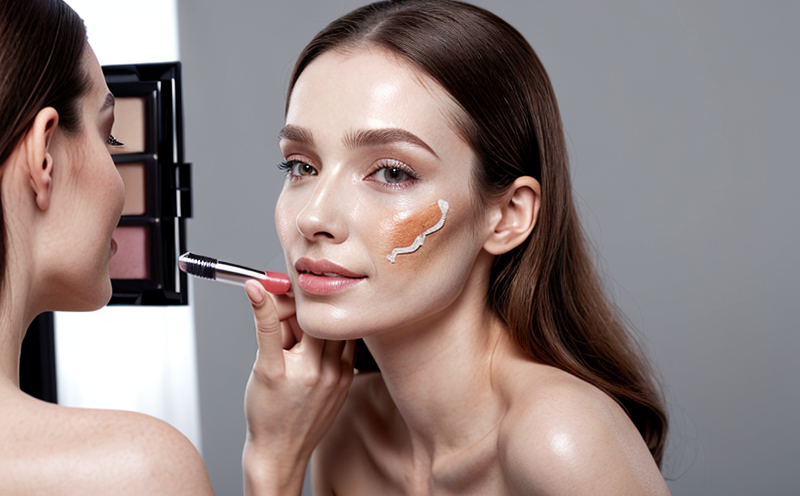Clinical Efficacy Testing of Anti-Frizz Hair Cosmetics
In the realm of cosmetics testing, ensuring the safety and efficacy of products is paramount. This section focuses specifically on clinical efficacy testing for anti-frizz hair cosmetics. Clinical efficacy tests are designed to evaluate how well a product performs its intended function under controlled conditions that mimic real-world use.
For anti-frizz hair cosmetics, these tests involve assessing the product's ability to reduce frizz in various hair types and textures, as well as evaluating its durability over time. The process typically begins with selecting representative samples of different hair types (e.g., straight, wavy, curly) for testing. Specimen preparation involves washing participants' hair according to standard protocols before applying the test product.
The primary apparatus used in these tests include scalp models and artificial hair strands designed to simulate natural human hair characteristics. Standardized methodologies such as ISO 21035-4:2018 are followed when conducting trials, ensuring consistent results across multiple batches of products.
| Test Parameter | Description |
|---|---|
| Frizz Reduction Percentage | Determines the extent to which frizz is reduced after applying the product. |
| Humidity Levels | Tests how well the product performs under varying humidity conditions, simulating different environmental factors. |
| Durability Over Time | Evaluates the longevity of the product's effects over extended periods. |
Acceptance criteria for these tests vary based on the specific claims made by the manufacturer. For instance, a claim stating that an anti-frizz hair cosmetic reduces frizz by 50% would require achieving this percentage or higher during testing.
The data collected from such trials is then analyzed to determine if the product meets both internal quality standards and external regulatory requirements. Compliance with international standards like ISO ensures consistent, reliable results across different markets.
Understanding these tests helps stakeholders make informed decisions about product development, quality assurance, and market entry strategies. This section aims to provide a comprehensive overview of what goes into conducting clinical efficacy testing for anti-frizz hair cosmetics, from sample preparation to final analysis.
Industry Applications
| Application Area | Description |
|---|---|
| Product Development | Evaluating new formulations to ensure they meet desired frizz reduction levels. |
| Quality Assurance | Conducting periodic checks to maintain product consistency and efficacy over time. |
| Regulatory Compliance | Maintaining adherence to local and international cosmetic regulations regarding product safety and efficacy. |
| Marketing Claims Validation | Supporting marketing materials by providing scientific evidence of a product's performance claims. |
Why Choose This Test
Clinical efficacy testing for anti-frizz hair cosmetics offers several advantages that make it a critical component of any successful product launch. By choosing this test, companies can ensure their products meet high standards of safety and performance.
- Guarantees consistent quality across different batches of the same product.
- Maintains compliance with international regulations and industry standards.
- Provides robust scientific evidence to back up marketing claims, enhancing consumer trust.
- Aids in refining product formulations based on real-world performance data.
The use of standardized methodologies ensures that the results are reliable and repeatable, which is crucial for both internal decision-making processes within a company and external interactions with regulatory bodies and consumers. This level of transparency builds credibility among stakeholders and helps foster brand loyalty.
Use Cases and Application Examples
- New Product Launch: A cosmetic company launches a new line of anti-frizz hair serums. Clinical efficacy testing ensures the product effectively reduces frizz across various hair types.
- Formulation Refinement: After receiving feedback from consumers, a brand revisits its formula to enhance frizz reduction abilities. Testing helps identify improvements needed before re-launching.
- Market Expansion: A company aiming to expand into new markets ensures its products meet local regulations and consumer expectations by undergoing rigorous clinical testing.





